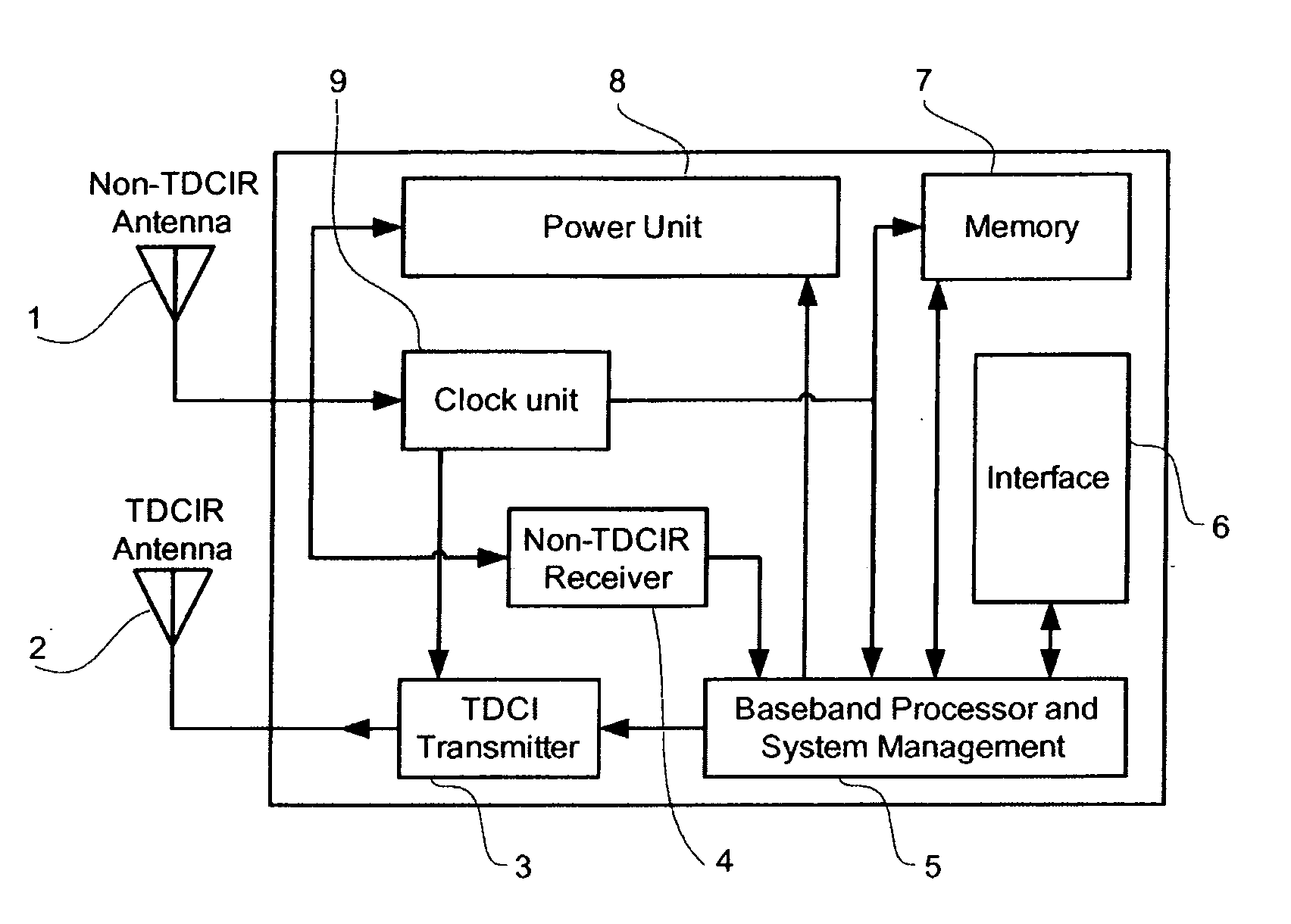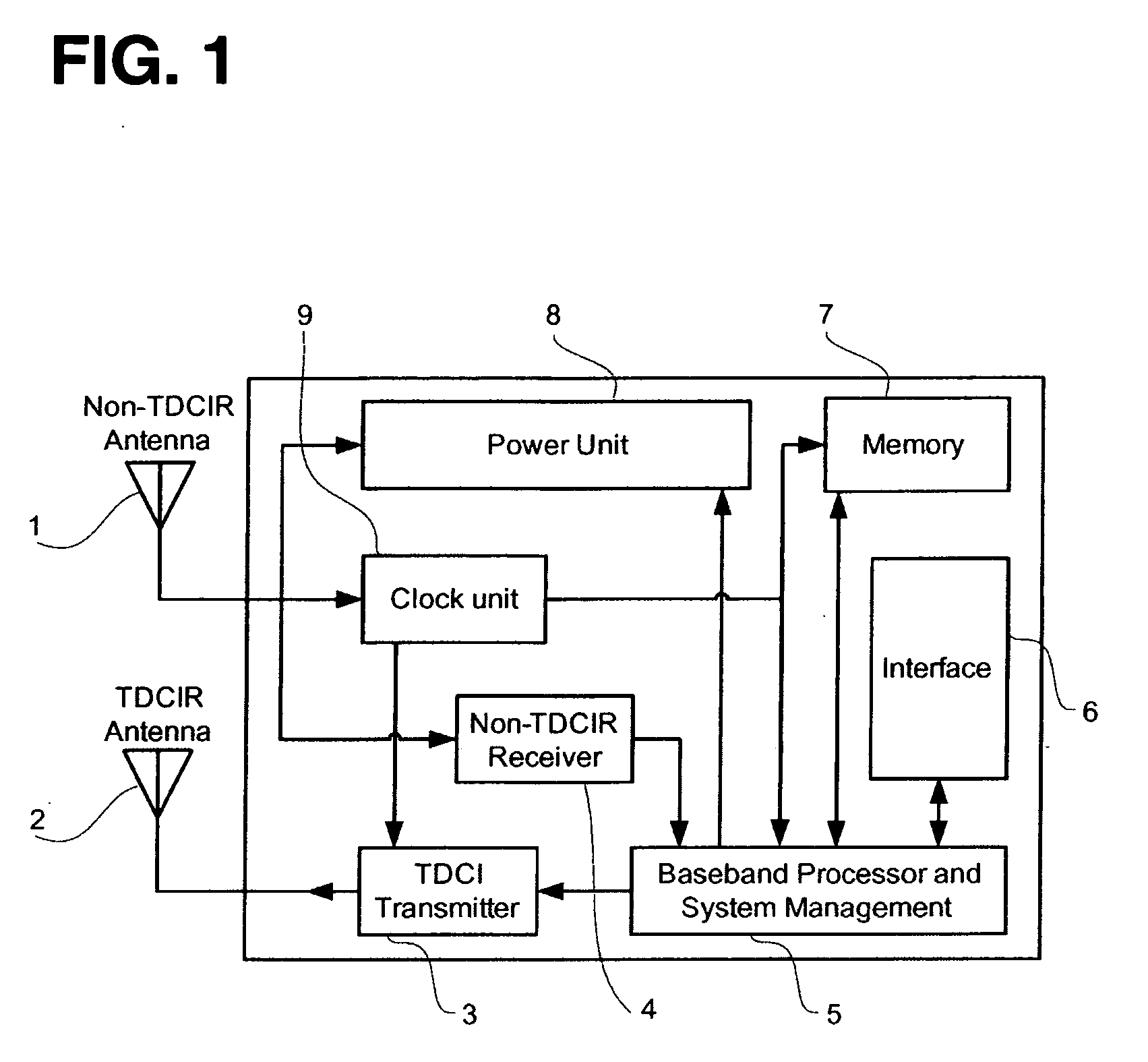Radio frequency tag and reader with asymmetric communication bandwidth
a radio frequency tag and asymmetric communication technology, applied in the field of communication, can solve the problems of polluting the rf spectrum, affecting the performance of the radio frequency tag, and affecting the performance of the radio frequency tag, and achieves the effects of enhancing the effect of continuous wave impulse radio communication between the transponder (the tag) and the interrogator (the reader). high speed and high data ra
- Summary
- Abstract
- Description
- Claims
- Application Information
AI Technical Summary
Benefits of technology
Problems solved by technology
Method used
Image
Examples
second embodiment
This second embodiment uses a 5th derivative of Gaussian as its impulse. This pulse is depicted in FIG. 17. As presented in FIG. 18, this pulse is occupying the bulk of the available spectrum in the 3.1-10 GHz band. Kim et al. suggest an approach to generate a 5th derivative impulse by well known digital elements; see (“5th derivative: All-digital low-power CMOS pulse generator for UWB system”, H. Kim, D. Park and Y. Joo, ELECTRONICS LETTERS 25 Nov. 2004 Vol. 40 No. 24).
There are other approaches to impulse generation that more efficiently utilize the FCC envelope. However, since most antennas act as differentiators on signals, a pulse like a Gaussian whose derivatives also maintain its spectral characteristics, offers a less surprising practical outcome.
The third embodiment is principally similar the first embodiment, but it presents the ability to use the same antenna for the TDCIR transmitter and the continuous wave receiver. An ultra wide band radio's fundamental dissimilarit...
PUM
 Login to View More
Login to View More Abstract
Description
Claims
Application Information
 Login to View More
Login to View More - R&D
- Intellectual Property
- Life Sciences
- Materials
- Tech Scout
- Unparalleled Data Quality
- Higher Quality Content
- 60% Fewer Hallucinations
Browse by: Latest US Patents, China's latest patents, Technical Efficacy Thesaurus, Application Domain, Technology Topic, Popular Technical Reports.
© 2025 PatSnap. All rights reserved.Legal|Privacy policy|Modern Slavery Act Transparency Statement|Sitemap|About US| Contact US: help@patsnap.com



